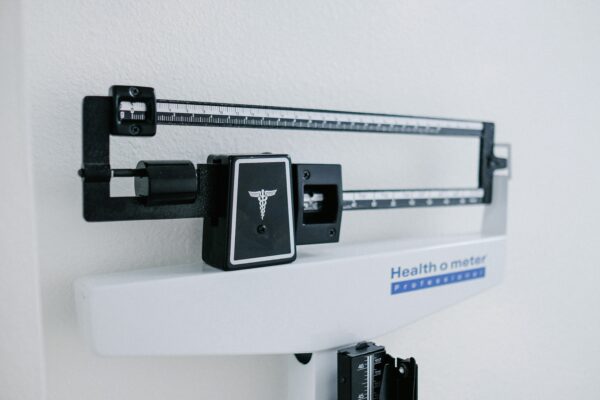March 26, 2025
Laboratory – Always At The Ready
- by Bridget Smudrick, BS, MLS (ASCP), Director of CLIA Compliance
Compliance is not a fire drill. Let’s examine that statement. The mere thought of a fire drill brings a certain amount of panic to mind. Panic, we can all agree, is the last thing you want when considering a state of compliance. Compliance should be a smooth and steady continuous flow which produces an Always At The Ready state of mind. Whether you are functioning in a hospital laboratory setting where life and death are hanging on the accuracy of the results you are producing or you are working as a nurse in a physician office laboratory just trying to balance your nursing duties with your laboratory responsibilities, the mindset of Always At The Ready is key. Within this blog, we will examine what being ready means, how ready is achieved and how ready is maintained.
What Does Always At The Ready Mean?
When considering an Always At The Ready state of mind with regard to compliance in a laboratory setting, we are looking toward the next big event. This big event could be an emergent patient, a proficiency event with an impending timeline or your next inspection. All of these events require a certain amount of preparation in order to produce a successful outcome. However, inspections are the event that seems to bring out the most amount of panic – why???? You panic when you are not prepared. Practicing Always At The Ready prevents the panic felt upon the receipt of that inspection announcement letter. So how do we remain Always At The Ready??? Remaining Always At The Ready is achieved by keeping records up to date for personnel, performing quality assessment exercises regularly, organizing the quality control records, maintaining your proficiency records and keeping your procedure manual up to date are all excellent areas to consider when creating an Always At The Ready state of mind.
How is Always At The Ready Achieved?
Keeping records up to date for personnel is a great place to start practicing Always At The Ready. In fact, deficiencies are often found during an inspection within personnel records. The Clinical Laboratory Improvement Amendment of 1988, affectionately referred to as CLIA, has specific rules for personnel qualifications as well as what you are required to keep on file for each testing personnel within the laboratory. The level of complexity in which you are testing determines the personnel qualifications. However, all testing personnel are required to have a few basic items within their personnel file prior to testing patients and that will be the focus of this blog. The following is a list of what a complete personnel file contains:
- Proof of education
- Proof of training
- Signed job description
- Competency assessments
- Proof of proficiency participation
- Proof of Bloodborne Pathogen annual training
Performing quality assessment exercises regularly is another great area to focus on when considering the Always At The Ready mindset. This is a vague and often confusing term used by laboratory professionals. In short, quality assessment is a means to ensure that your laboratory is producing accurate and reliable results. Having a written quality assessment plan is a CLIA requirement for every laboratory and will always be a focus during any inspection. Without this plan, the Laboratory Director is not able to evaluate and improve the quality systems of the laboratory. The following components are required when it comes to performing a proper quality assessment:
- Complete list of Procedures
- Validated Tests
- Properly Maintained and Calibrated Equipment
- Testing Personnel Training and Competencies
- Accurate Quality Control for your test methods
- Proficiency Testing
Keeping quality control records organized for ease of review is another aspect of being Always At The Ready. Quality Control is essential to producing accurate results and is a major area of focus during an inspection. Key components of quality control include using the appropriate controls, practicing the correct method for running controls and maintaining your control records. Making sure your quality control is appropriate for your test method is vital. Therefore, ordering quality control vials made by the manufacturer specific to your instrumentation is the best way to ensure your quality control is appropriate. The proper method for quality control is determined by the specialty of your testing method. Whether your specialty is chemistry or hematology, CLIA has guidelines for how many levels should be used and how often you should use them. Furthermore, no job is finished until the paperwork is done and the clinical laboratory is no exception to this adage. Quality control records are required to be maintained for the life of the instrument plus two years. So, whether you use an electronic or paper system, be aware of this requirement so you can remain Always At The Ready.
If your laboratory is in an Always At The Ready mindset, your proficiency records will be maintained and complete for each event. Proficiency testing is yet another area of the laboratory where deficiencies can really add up during an inspection. Proficiency participation is required by CLIA for all regulated analytes and serves as an external test that can reveal issues with your test method, your instrument and your testing personnel. Your laboratory is required to maintain proof of proficiency participation and all paperwork surrounding these events. The following is a list of required elements for each proficiency event:
- Package insert
- Test results
- Attestation
- Graded results
- Any corrective actions
A complete and up-to-date procedure manual is not only a CLIA requirement but an essential tool for an Always At The Ready laboratory. Testing personnel will use your procedure manual as a reference in order to properly perform all testing and follow all protocols. With this in mind, the procedure manual is often the first item the inspector will review during your survey. Reviewing certain required policies and that you have a written procedure for each test you perform is only a place to start for the inspector. From the collection of the samples to the reporting of results, the procedure manual covers in detail each aspect of the process. The following topics should be included in every procedure manual:
- Patient Test Management
- Specimen Collection and Rejection
- Medical Alert Values
- Systems Management
- Quality Control
- Facilities and Equipment
- Downtime
- Proficiency Testing
- Reagent Management
- Procedures
- Test Records and Reports
- Corrective Actions
- Incident Management
- Safety
How Always At The Ready Is Maintained?
As you can see, a tremendous amount of preparation goes into running a successful laboratory and receiving that coveted “no deficiencies” letter following an inspection. However, maintaining aspects of a compliant laboratory is not as difficult as it seems. If tasks are done as required and paperwork is completed with each task as it occurs, maintaining all that is required of us in the laboratory is much less intimidating. Having an Always At The Ready mindset is truly the heart of compliance. The following are some helpful maintenance tips:
- Personnel should be vetted prior to testing patients and their personnel files in order to properly maintain personnel records.
- Patient results are only as accurate as your last quality control result. Keep a watchful eye on shifts or trends with a weekly review of your quality control graphs.
- Quality Assessment tasks should be completed monthly as a review of policies and test systems.
- Proficiency events should be performed when they arrive and the documentation should be completed as each portion of the event is finished.
- Update your procedure manual any time you have a change in test method and review it monthly to ensure it is up to date.
Maintain CLIA Compliance With DoctorsManagement
In summary, compliance should be a smooth and steady continuous flow, not a panic. No matter your work environment, Always At The Ready is easy to achieve with small daily commitments. Keeping records up to date for personnel, performing quality assessment exercises regularly, organizing the quality control records, maintaining your proficiency records and keeping your procedure manual up to date simply takes a little preparation and a dedication to excellence. The reward – a spotless inspection record you can be proud of.
DoctorsManagement has been assisting laboratories in maintaining CLIA compliance for over 30 years. Our team is able to assist at any complexity level with all areas of compliance. For example, we offer consulting for topics such as quality control, quality assessment, proficiency testing, records retention, personnel file review, review of and assistance with instrument validation, inspection preparation, inspection response and more. Our expert team has all of the forms, manuals and experience required to create an atmosphere of Always At The Ready for your laboratory.

























